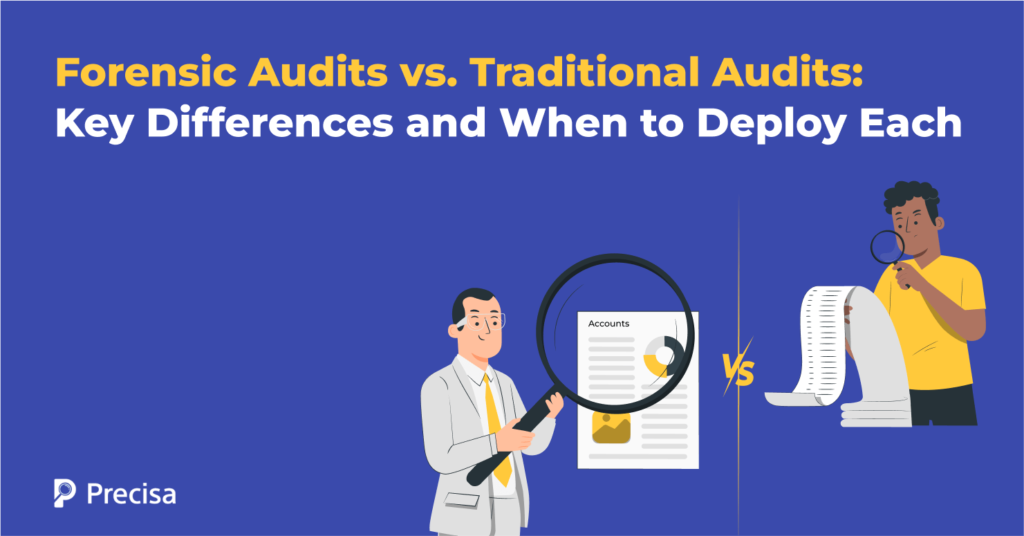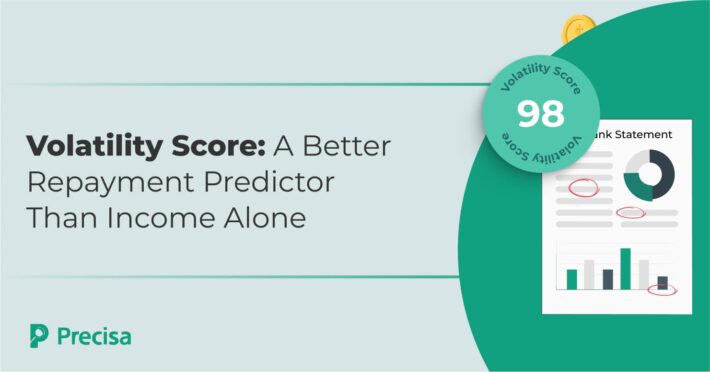Forensic vs Traditional Audits: Key Differences Explained

India suffered over ₹11,000 crore in losses to cybercrime in 2024. Stock trading frauds alone accounted for ₹4,636 crore. Tamil Nadu specifically reported losses over this period of ₹1,116 crore.
For financial health, traditional audits have long been the norm, but forensic audits are a better choice when legal conflicts or fraud suspicions surface.
In India’s rigorous regulatory environment, where financial mistakes can result in severe penalties and reputation damage, knowing when to apply traditional or forensic audits is absolutely vital.
While traditional audits are a preventive measure with more of an eye toward financial procedures, forensic audits act as a corrective tool, actively finding and addressing fraud.
Let us explore the many roles these audits serve in preserving financial integrity across sectors.
How Do Traditional Audits Work?
Traditional audits are systematic assessments meant to provide a more complete picture of the financial situation of an organisation by verifying its regulatory compliance and financial accuracy.
These audits, carried out either internally or outside, comprise risk assessment, record checking, and physical audits that apply standard accounting techniques.
Their scope is restricted, however, in terms of spotting sophisticated fraud.
Important Characteristics of Traditional Audits
- Planned Assessment: Usually annually or quarterly, they follow a consistent and predictable timeline based on the Companies Act 2013.
- Offer a Broader Picture: Examine the whole financial ecosystem of a company instead of concentrating on particular operations or transactions.
- Adopt Regulatory Frameworks: Follow accepted frameworks, including RBI’s lending institution policies, SEBI’s regulatory rules for listed companies, and the Standards on Auditing (SA) published by the ICAI.
- Compliance-Orientated: Mostly concerned with verifying regulatory compliance with Indian laws, including the Companies Act, Income Tax Act, and GST clauses.
Challenges of Traditional Audits
While good for financial validation, traditional audits sometimes overlook sophisticated fraud. A 2023 analysis by India’s Association of Certified Fraud Examiners revealed a significant discrepancy: 45% of fraud cases were discovered outside of regular audits.
Particularly in cases of management override, auditors could lack the forensic knowledge required to find intentional manipulation.
As ICAI’s 2022 white paper notes underline,
“Standard audit procedures may not be sufficient for detecting collusive fraud involving management override of controls, especially in the Indian business environment where promoter influence remains significant.”
Many times, traditional audits lack the advanced analytics and investigative technology required to expose financial record manipulation.
How Do Forensic Audits Work?
Financial audits serve as financial investigations set off by evidence of misbehaviour or financial anomalies.
Aiming to find problems like embezzlement and money laundering by spotting anomalies and red flags, they are proactive and investigative.
Advanced methods used in forensic audits include data analysis and mining, review of digital records and communications, key management interviews, asset tracking, and background checks.
For forensic audits, for instance, artificial intelligence-driven transaction analysis and automated document verification help probe and expose intricate financial misrepresentation in real time.
Forensic Audits: Key Characteristics
- Investigative Nature: Uses professional scepticism and probes relationships and transactions, raising red flags.
- Non-Scheduled: Usually initiated by SFIO, SEBI, or RBI instructions, forensic audits result from particular issues rather than following a set schedule.
- Specialised Expertise and Tools: Forensic auditing teams use accredited tools to conduct investigations and have qualifications outside of basic accounting degrees.
- Evidence-Orientated: Stresses gathering and preservation of legally admissible evidence according to the Indian Evidence Act.
The case of the ₹7,800 crore Satyam scam underlined the need for forensic audits in identifying the sophisticated fraud, in which conventional auditing approaches failed.
Particularly in high-risk lending, forensic audits can also be quite important in pre-lending due diligence to stop fraud before it starts.
Advanced Techniques Used in Forensic Audits
The role of technology in forensic auditing is rather important:
- Risk-Based Investigation – Focuses on high-risk loan categories and sets automated triggers for odd collateral valuations or sudden income spikes.
- Leverages AI-Driven Transaction Analysis — Uses data models to flag anomalies, identify circular transactions, and find round-trip transactions or shell company operations.
- Implements Automated Document Verification – Uses metadata analysis to find manipulation and checks documents against source records to strengthen due diligence.
- Conducts On-Site Operations Reviews – Through site visits, inventory checks, and supplier-customer relationship reviews to identify fraud and confirm business legitimacy.
- Integrate Real-Time Compliance and Asset Tracking—This automates regulatory adherence, preserves audit trails, and guarantees legally admissible forensic results.
- Adopt Cloud-Based Forensic Audit Tools – Using real-time monitoring, credit risk assessment tools and AI-driven analytics improves fraud detection.
Traditional Audits vs. Forensic Audits
The main differences between traditional and forensic audits are shown in the table below:
[table id=1 /]
Insufficient audit policies might have grave results. For example, the RBI fined 13 banks ₹65.85 crore for non-compliance with fraud detection standards.
When to Deploy Each Type of Audit
Selecting the right type of audit is crucial for maintaining financial integrity, regulatory compliance, and stopping fraud.
Apply Traditional Audits in the Following Situations
- When the main goal is fulfilling legal criteria.
- For yearly assessment of the financial situation of a company.
- When giving lenders, other stakeholders, and legal authorities confidence in a company’s financial statement
- In lending situations where established relationships exist and borrower profiles show red flags
Use Forensic Audits in the Following Situations
- Should there be indications of possible accounting fraud, such as erratic financial trends or dubious transactions.
- Following particular reports of financial misbehaviour from either inside or outside sources. Example: Infosys 2019 case.
- In high-risk lending scenarios involving borrowers from complicated corporate structures or volatile sectors.
- To find possible liabilities by doing due diligence in mergers and acquisitions.
- Based on KPMG’s 2024 India Fraud Survey, 61% of Indian companies said that the most efficient approach to identify and lower fraud rates is using a tech-based early warning system mechanism, which is standard in forensic audits.
Key Takeaway
Forensic and conventional audits represent different ways of handling security and financial control. Modern technology, with artificial intelligence, automation, and data analytics, does, however, enhance forensic audits.
Cutting-edge tools can analyse bank statements, segregate transactions, and identify fraud patterns faster. This is absolutely important since inadequate internal controls cause 32% of fraud cases.
Precisa’s cloud-based, highly intuitive analytics solutions bridge the gap between traditional and forensic audits:
- The platform’s Account Aggregator Integration with current Indian banking systems, including IMPS, UPI, and NEFT/RTGS networks, helps acquire and examine consolidated financial data securely.
- It also performs predictive analysis depending on real-time data from the GST and credit bureaus
- The automated bank statement analysis methodically reviews statements, identifies fraud, and allocates a Precisa score
- The Anti-Money Laundering (AML) Analysis lets auditors and law enforcement look at cybercrime and money trails
The software enables companies to make smart business decisions with the real-time delivery of actionable insights on a customised dashboard.
Request a free demo today!




